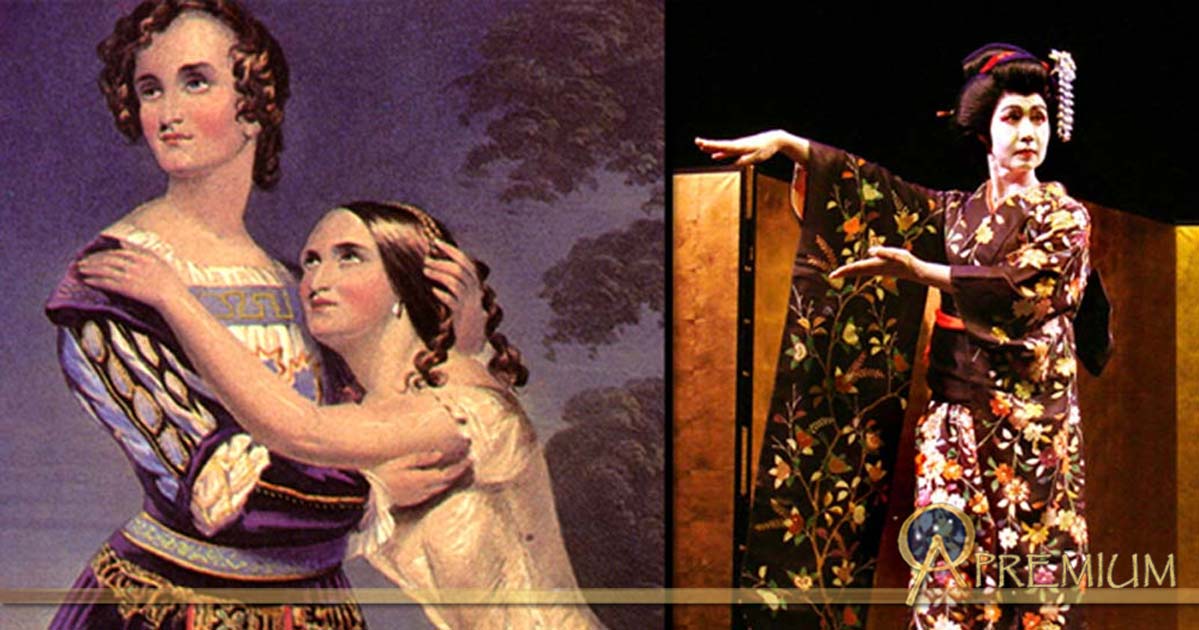Ancient History of Cross-Dressing: From Ancient Religions to the Theaters
Ephippus, in a surviving fragment of his lost pamphlet depicting the court of Alexander the Great in 324-323 BC, alleges that Alexander liked to cross-dress as the Greek archer-goddess Artemis. Supposedly, Alexander often appeared in public as Artemis dressed in the Persian garb with a bow and hunting-spear. It is likely that the passage is a libel, possibly to denounce Alexander. As his father Philip had destroyed Epipphus’ home city of Olynthus in 348 BC, Epipphus may not have been too fond of the young king.

Artemis with a hind, better known as "Diana of Versailles". Marble, Roman artwork, Imperial Era (1st-2nd centuries CE). (Public Domain)
Epipphus’ choice of slander left room for a wide range of interpretations. Seeing this from a modern perspective, Epipphus’ way to demean Alexander may be the allegation that the mighty king Alexander was a cross-dresser. But, what if Epipphus meant to ridicule Alexander the king for presumptuously impersonating a deity – an activity reserved for priests? This would illustrate what seems to be ancient society’s attitude towards cross-dressing.
Imitation, Transformation and Transgression: Cross-dressing in Ancient Mythology and Religions
Crossdressing is recorded around the world from the ancient past up to the present. In the ancient world, cross-dressing often mirrored gender-crossing actions of deities. In this context, it was tolerated, even supported, as an aspect of religious devotion. Also in this context, the transformation of gender is often associated with the process of coming closer to divinity by breaking down the categories of ordinary human experience. The manipulation of dress, therefore, is the most visible and convenient way for human beings to do what divine beings accomplish by other means, including crossing gender.
The Sumerian deity Inanna, identified with the Akkadian Ishtar, is believed capable of either gender presentation to bridge heaven and earth as well as gender-altering power.

Molded naked figure holding breasts. Between 1300 and 1100 BC. (CC BY-SA 2.0 fr)
Her cults included the kurĝara, whose dress incorporated mixed gender elements in their public processionals. Atum, of ancient Egypt, could be depicted androgynously, as said in a coffin text which says “I am the great He-She”. But perhaps the best known example of a divine gender-bender was Dionysus. Greek literature scholar Albert Henrichs called Dionysus “the most versatile and elusive of all Greek Gods,” as he was perceived as both man and animal, male and effeminate, young and old.

Dionysus in Bacchus by Caravaggio. (Public Domain)
As there are many legends about Dionysus, there are varied depictions of Dionysus ranging from bearded Dionysus to more effeminate versions. Archaic vases show him in a woman’s tunic, saffron veil, and helmet. Dionysian festivals frequently featured role reversals such as cross-dressing. In the festival of Oschophoria, for example, young, wealthy noblemen dressed as women and led a sacred procession from the Temple of Dionysius to that of Athena.

Dionysus, Silenus (and Maenad?). Red-figure krater. (Ad Meskens/ CC BY-SA 3.0)
Deities often take disguises. Frequently the disguise involves appearing as a gender different from the one typically associated with that deity. Athena, for example, in Homer’s Odyssey disguises herself as Mentor, the male friend of Odysseus. Zeus disguised himself to appear like Artemis. His aim was one of those familiar to gender-crossings for thousands of years to come, which is to gain an access he would have otherwise lacked. In this case, it was access to the nymph Callisto.
This is a free preview of an exclusive article from Ancient Origins PREMIUM.
To enjoy the rest of this article please join us there. When you subscribe, you get immediate and full access to all Premium articles, free eBooks, webinars by expert guests, discounts for online stores, and much more!
- Castrati: The Superstars of the Church and Opera in 16th Century Europe
- Entire Family Executed by First Female Emperor of China: Tomb Reveals Bloody Past
- Ng Mui - The Nun Who Invented the Martial Arts Wing Chun
Top Image: Left, Sisters Charlotte and Susan Cushman in Shakespeare's Romeo and Juliet in 1846 (Public Domain); Right, Male Kabuki actor in Japan (CC BY 2.0)


















